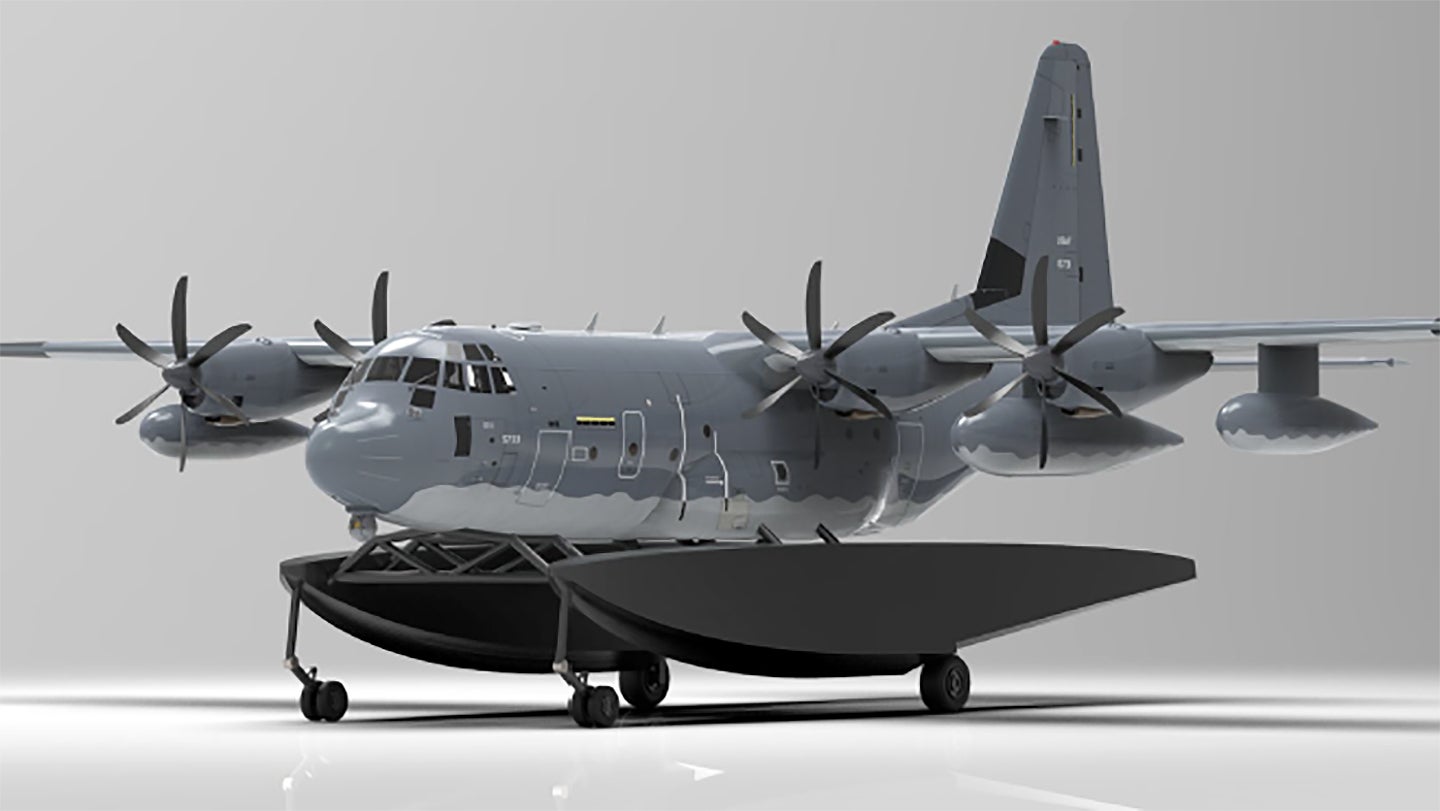Back in May, we reported on the fact that U.S. Air Force Special Operations Command (AFSOC) really wanted to make the long-standing dream of a C-130 seaplane a reality. In fact, the so-called MC-130J Amphibious Capability, or MAC, was listed as one of its new procurement priorities. While we had a grainy little rendering of what this could look like when we filed that report, as well as other historical design concepts, we now have a far better look at exactly what they want, and yes, it is a C-130 on floats.
Actually, they have put forward a number of similar floatplane concepts, some more traditional looking while others are more streamlined, conformal, and futuristic looking. The capability appears to include the requirement for amphibious operations. In other words, the MC-130 can still land on a runway with the floats fitted. You can see the renderings AFSOC has posted throughout this article.
Air Force Special Operations Command stated the following, which is pretty much what we summed up in May, in an official release dated September 14th, 2021:
The C-130J is an incredibly versatile aircraft, and since its creation, it’s landed on rough fields, in arctic locations and even an aircraft carrier Yet, it cannot land on water, which covers about 71% of the planet. As national strategic objectives shift focus to littoral regions, Air Force Special Operations Command is advancing new approaches to expand the multi-mission platform’s runway independence and expeditionary capacity.
In partnership with the Air Force Research Lab’s Strategic Development Planning and Experimentation (AFRL-SDPE) directorate, AFSOC is developing an MC-130J Commando II Amphibious Capability (MAC) to improve the platform’s support of seaborne special operations. “The development of the MAC capability is the culmination of multiple lines of effort,” said Lt Col Josh Trantham, AFSOC Science, Systems, Technology, & Innovation (SST&I) Deputy Division Chief. “This capability allows the Air Force to increase placement and access for infiltration, exfiltration, and personnel recovery, as well as providing enhanced logistical capabilities for future competition and conflict.”

The development of a removable amphibious float modification for an MC-130J would enable “runway independent” operations, which, according to Trantham, would extend the global reach and survivability of the aircraft and Air Commandos. “Seaborne operations offer nearly unlimited water landing zones providing significant flexibility for the Joint Force,” Trantham said.
Utilizing the MAC capability may provide unlimited operational access to waterways to distribute forces if land assets are compromised.

There is no doubt about it, runway independence is becoming a huge issue within Pentagon as peer state adversaries, and even less-capable ones, put large fixed runways at risk over great distances, namely via the employment of ballistic missiles. As such, bringing C-130 might and flexibility to bear without needing a runway at all is becoming a very attractive proposition.
Maj Kristen Cepak, AFSOC Technology Transition Branch Chief, states:
“MAC is vital to future success because it will allow for the dispersal of assets within a Joint Operations Area… This diaspora complicates targeting of the aircraft by our adversaries and limits aircraft vulnerability at fixed locations.”

Right now there is a five-phase prototyping initiative underway that hopes to lead to an operational demonstration of the MAC concept in just 17 months. This is a very ambitious timeline that is aided by virtual modeling and other digital engineering concepts that are all the buzz right now within the Pentagon and especially the Air Force. Lockheed Martin has the benefit of conducted numerous design studies into exactly this kind of capability in the past, including at least one based on the C-130J variant as recently as the late 1990s, as well.
Then, with much of the development work done and even tested, AFSOC could move really quickly into full acquisition mode to field a truly operational MAC and to potentially help deploy the concept on other C-130s (firefighting anyone?).
Lt Col Josh Trantham explains:
“We believe MAC will be able to be used by our sister services, allies, and partners on various C-130 platforms… Further, expanding the operational use of an amphibious aircraft alongside other innovative tools will provide even more complex dilemmas in future battlespaces for our strategic competitors.”

It’s amazing to think after nearly seven decades of C-130s, an aircraft that has been adapted to do so many disparate things, we may be on the precipice of finally getting one that can operate from water.
We will keep you in the loop as this fascinating program progresses.
Contact the author: Tyler@thedrive.com
